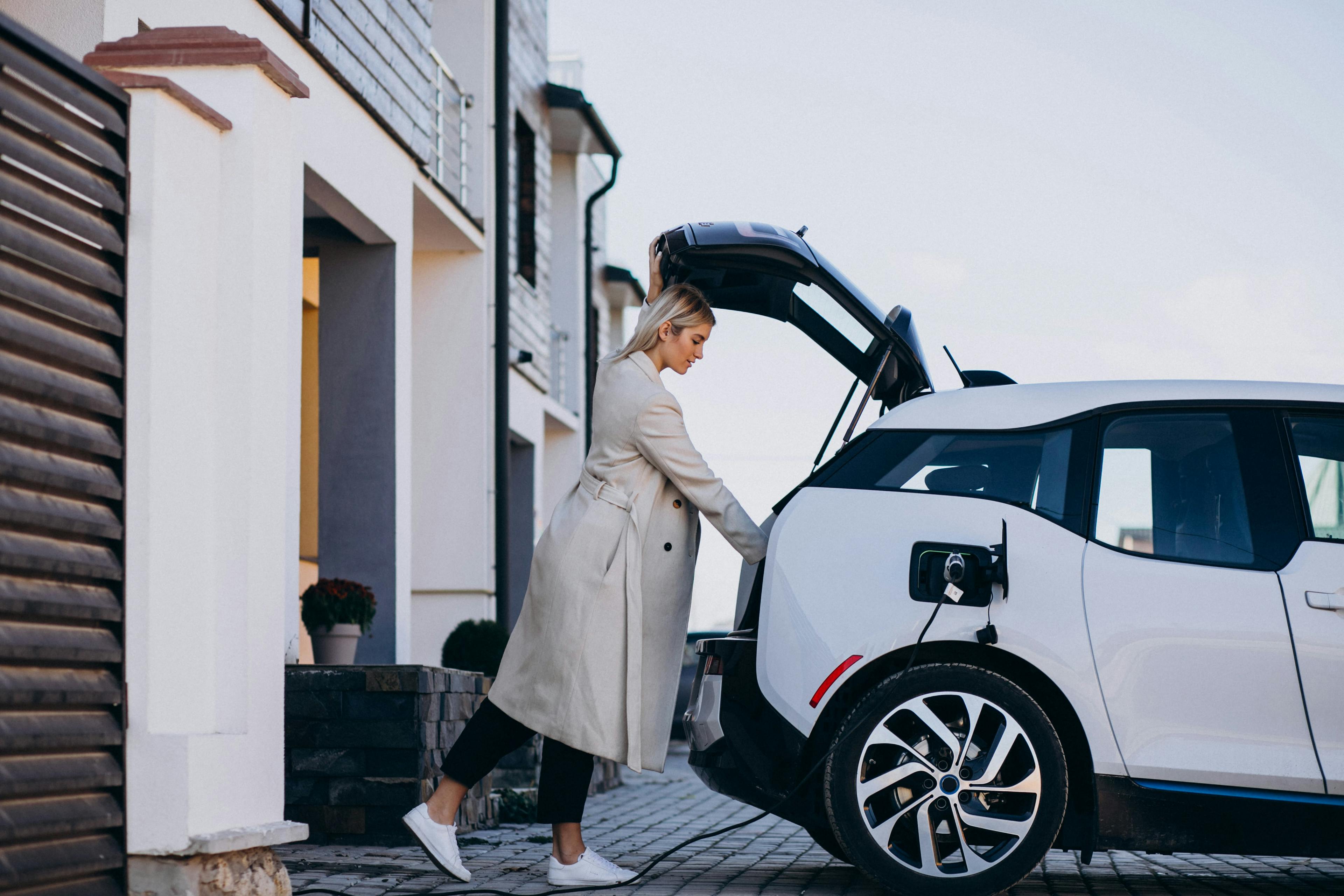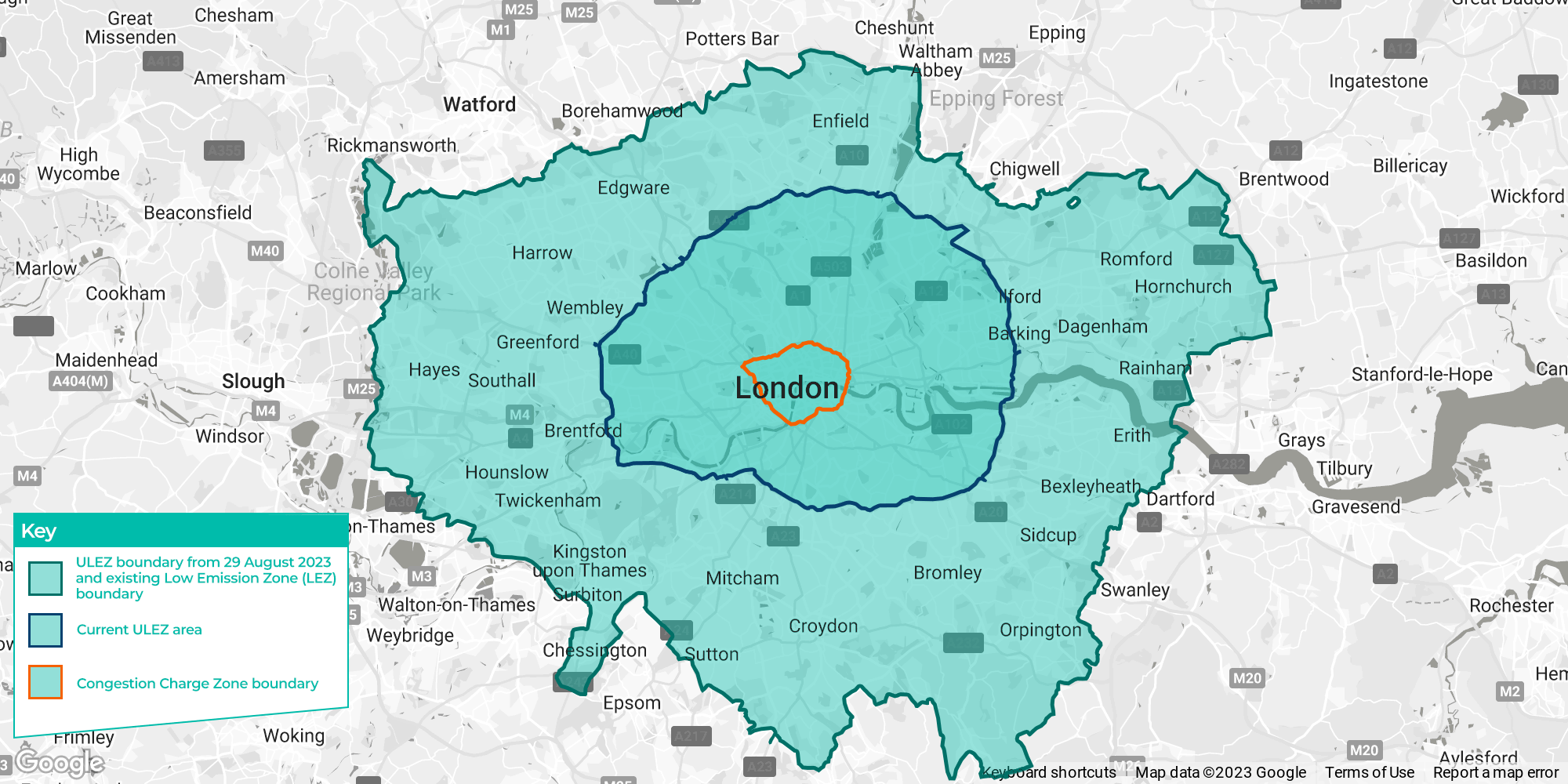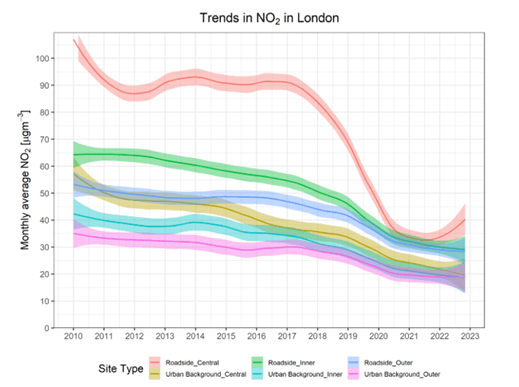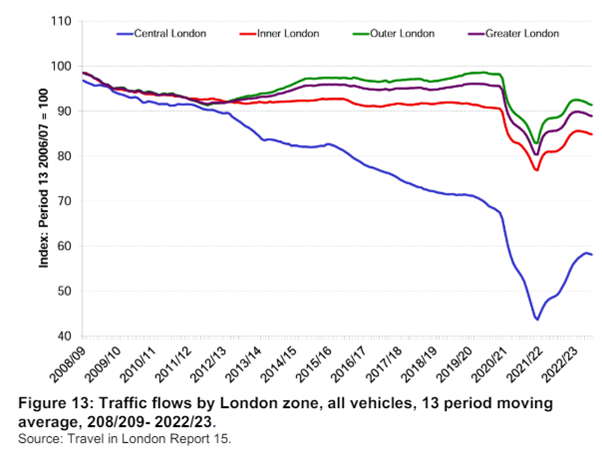
Everything You Need to Know About the ULEZ Expansion 2023
Find out what changed about the London ULEZ
London’s Ultra Low Emission Zone has been in place since the 8th of April 2019 and was first expanded in October of 2021 to cover the Inner London area. In August 2023, it expanded to cover the whole of Greater London to help reduce air pollution further across the capital and improve the air quality for Londoners and commuters alike.
Here is everything you need to know about the ULEZ Expansion in 2023.
What is the ULEZ?
The Ultra Low Emission Zone (ULEZ) is an area of London in which drivers of the most polluting vehicles are charged to drive through. The plans were mapped out by former Prime Minister and London Mayor Boris Johnson and implemented by current Mayor Sadiq Khan in April 2019.
In the first few months of the ULEZ being implemented, a 20% reduction of harmful emissions was recorded, alongside a huge drop in the number of vehicles driving through the area.
As the zone expands to the whole of London, Khan hopes that the ULEZ “will help us to continue building a better, greener, fairer and healthier London for everyone”.
Where Did the ULEZ Expand to?
Before, the zone covered all areas within the North and South Circular Roads. As of the 29th of August 2023, it covers all London Boroughs.
The M25 is not included in the zone and provides a route for drivers whose cars do not meet the emissions standards around the ULEZ. You will not be charged for driving along the part of the M25 that crosses the Greater London boundary.

Who Will be Affected by the ULEZ Expansion in 2023?
All vehicles that do not meet the ULEZ emissions standards will have to pay the daily charge to drive in the zone. This includes cars, motorcycles, vans, motorised horse boxes and minibuses.
Four out of five vehicles will already meet the standards, however, if your car is petrol and older than sixteen years old, or diesel and older than six years old, you may be affected. You can check to see if your car is compliant on the TfL website.
How Much Will it Cost Me to Drive in the ULEZ?
The charge to drive in the ULEZ has not changed. It is a daily charge of £12.50, regardless of how long you spend in the zone. It runs from midnight to midnight, rather than a 24-hour period. So, if you enter the zone at 11.50 pm, and then again and 12.10 am, you will need to pay twice.
You can pay this by midnight on the third day after your journey, or up to 90 days in advance if you know you will be driving through the zone on a particular day. You can do this on the website, the TfL app, or over the phone.
What is Auto Pay?
If you regularly drive throughout the ULEZ, it may be beneficial for you to set up Auto Pay. You simply set up an account and register your vehicle, and every month you will be charged for the journeys you have taken with the ULEZ, LEZ, and the Congestion Zone.
It is free to sign up for now, and you can register up to five different vehicles. Set up Auto Pay here.
What Happens If I Don’t Pay the ULEZ Charge?
If you don’t pay the charge in the allotted time, you will be charged with a Penalty Charge Notice. If you pay the PCN within 14 days of being issued, it will cost you £90. Any longer than that and you’ll have to pay the full £180 charge.
You can pay online, on the app, or by post.
What Else Has Changed?
Alongside the ULEZ expansion, several changes are being introduced for Londoners.
ULEZ Support
Transport for London has teamed up with several companies to offer discounts and deals that can help Londoners save money. You can get money off bikes, e-bikes and e-scooter subscriptions and purchases, and discounts to car and van rentals and clubs. Browse the deals here.
Discounts and Exemptions
There are several discounts and exemptions for certain people. Drivers whose vehicles are registered with disabled tax or disabled passenger tax class vehicles are eligible for a grace period which exempts them from paying the ULEZ charge until the 24th of October 2027.
This grace period is also available to those receiving disability benefits and those who own a wheelchair-accessible vehicle. You will need to register for this.
If you need to attend an NHS appointment and are deemed too ill to travel on public transport, you may be eligible to claim back any charges you paid from the hospital you were treated at.
Several other vehicles may also be valid for exemption. Specialist agricultural vehicles, military vehicles, and historic vehicles may be eligible for exemption.
You can view the full list of exempt vehicles on the ULEZ website, as well as apply and register for discounts and exemptions.
What is the London Scrappage Scheme?
Mayor Sadiq Khan has introduced a £110 million scrappage scheme to help Londoners swap their cars for emission-free varieties, such as electric cars. It is for Londoners on certain low income or disability benefits with cars, motorcycles and wheelchair-accessible vehicles that do not meet the ULEZ emissions standard.
Eligible applicants can get up to £2000 for scrapping a car, or £1000 for scrapping a motorcycle. You will need to live within one of the 32 London Boroughs, as well as receive certain benefits to be eligible. You can view the grant options and apply on the ULEZ website.
If you own a micro business (10 employees or less) you may be eligible for up to a £9500 grant for scrapping a van or minibus. Your business needs to be registered within London to be eligible for this grant. You can see the requirements here.
Has the ULEZ Improved the Air Quality?
With the core aim of the London ULEZ being to improve the air quality, what has research shown since its introduction?
In a report published by the Mayor of London in February 2023, it was revealed that nitrogen oxides (NOx) emissions directly from road traffic had reduced by 13,500 tonnes across London over a four-year period. This is equal to a reduction of 23%.
It was also found that carbon emissions from vehicles have reduced, with an estimated reduction of 800,000 tonnes of CO2 emissions from vehicles across London over the same four years: a saving of 3%. Within the ULEZ there was a saving of 290,000 tonnes, which is a reduction of 4%.
It is estimated that the ULEZ has led to four million people breathing cleaning air.

Has the ULEZ Had an Affect on Traffic and Vehicle Compliance?
The introduction of the ULEZ has had an overwhelmingly positive affect on traffic and vehicle compliance.
Overall, the vehicles travelling in London are cleaner, with 94.4% of vehicles seen driving in the ULEZ meeting standards, an increase of 39% since the expansion was announced in 2017.
There has also been an overall reduction in traffic flow. In October 2022, there were 47,00 fewer vehicles seen in the zone on an average day – a reduction of almost 5%.

Read More
Is an Electric Car Right for Me?
If you regularly drive into a Clean Air Zone, LEZ or ULEZ, the charges can quickly add up. Discover whether driving an electric car will help remove this frustration by reading this guide.
Bristol Clean Air Zone: Everything You Need to Know
Find out more about the Bristol Clean Air Zone in this guide. We cover where it is, what vehicles are exempt, how much the charges are and more.
Bradford Clean Air Zone: Everything You Need to Know
Find out more about the Bradford Clean Air Zone in this guide. We cover where it is, what vehicles are exempt, how much the charges are and more.
Portsmouth Clean Air Zone: Everything You Need to Know
Find out more about the Portsmouth Clean Air Zone in this guide. We cover where it is, what vehicles are exempt, how much the charges are and more.